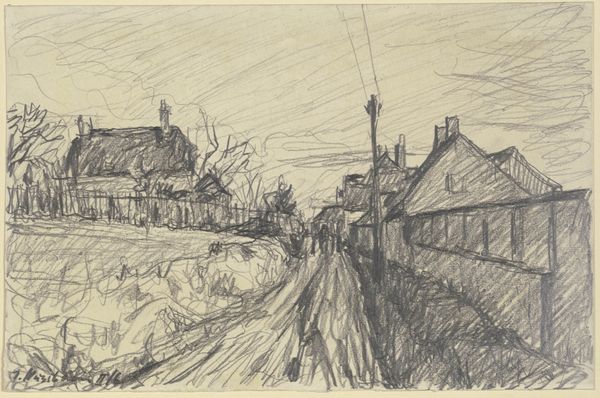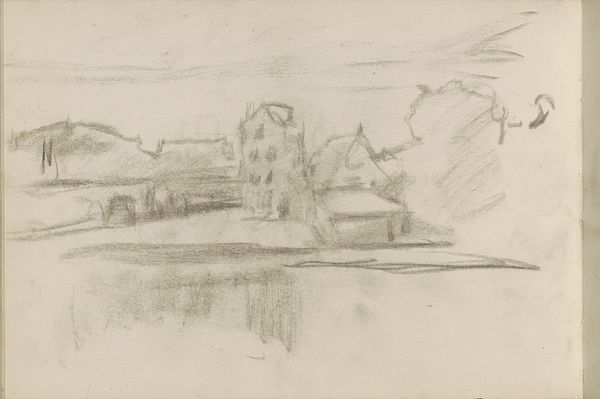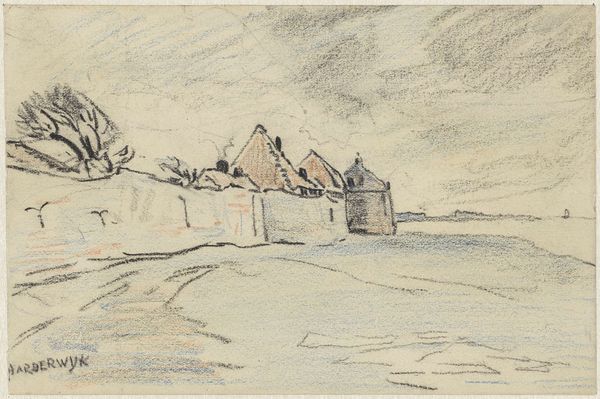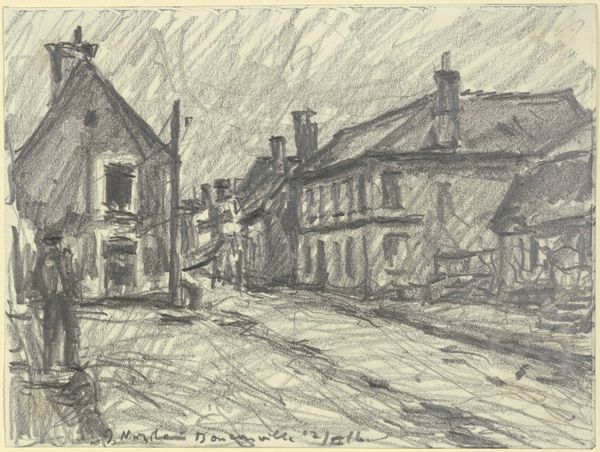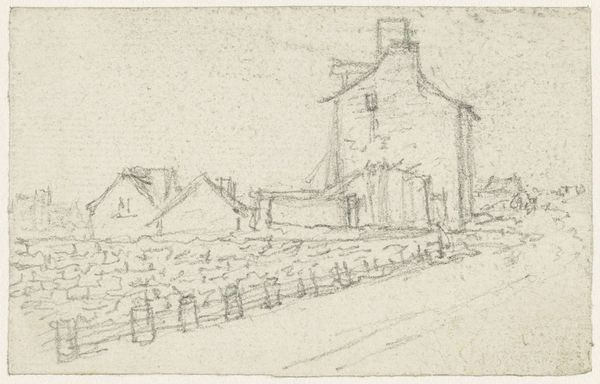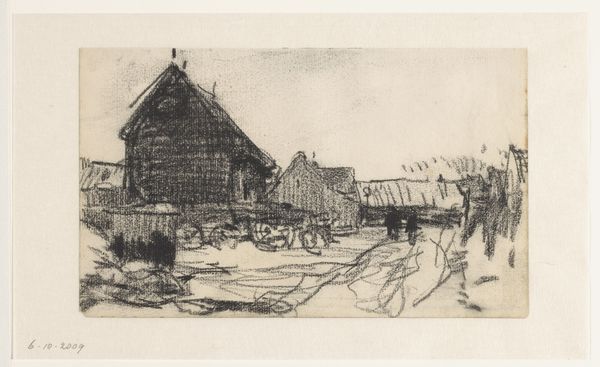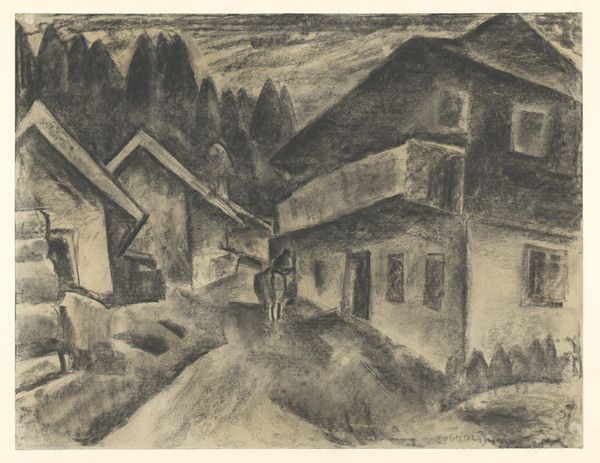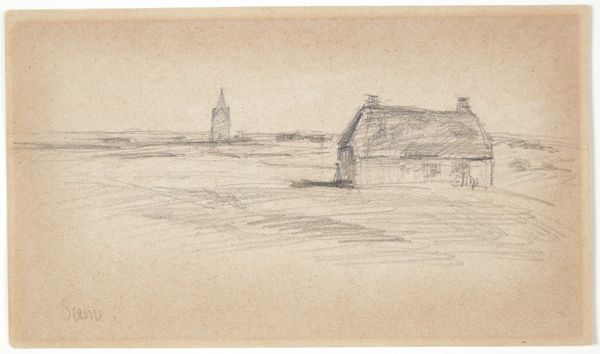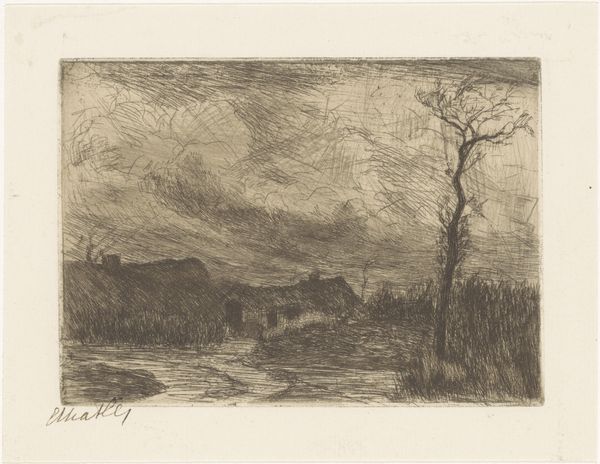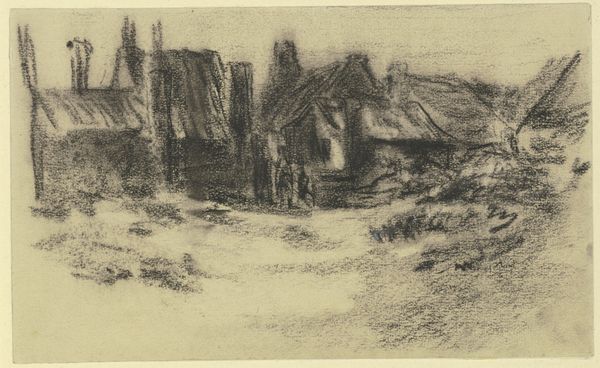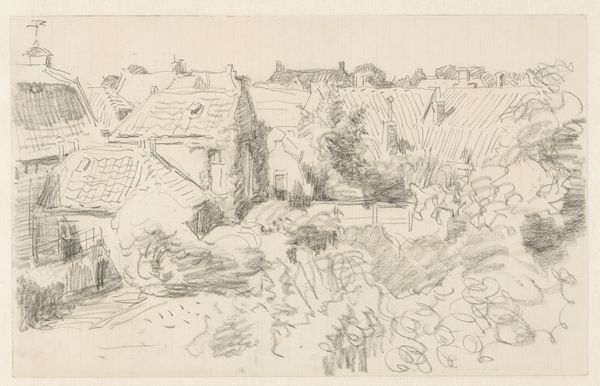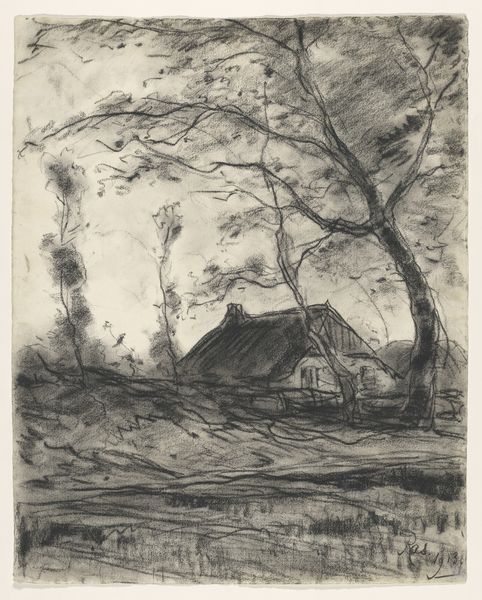
drawing, pencil, graphite, architecture
#
drawing
#
landscape
#
pencil
#
graphite
#
architecture
Copyright: Public Domain
Curator: Before us is Jakob Nussbaum's pencil and graphite drawing, "Farmstead in Ardon," created in October of 1916, currently residing here at the Städel Museum. Editor: Immediately, I notice the stark, almost melancholic feel evoked by the monochromatic palette and rough textural work; it appears a heavy application of graphite sets a somber, introspective tone. Curator: Given that this work was made during World War I, I wonder if we could interpret the lone figure observing the scene as symbolic of isolation or a loss of connection with the land? Rural imagery often conveys notions of refuge or a return to simpler times. Yet the drawing presents us with a rather disquieting depiction. Editor: Interesting—the diagonal lines in the composition create a directional flow toward that distant, yet somehow withdrawn, farmhouse. We should think about the significance of this pictorial device. Nussbaum also employs what strikes me as deliberate sketchiness to deny us sharp outlines or clearly defined forms. It introduces a certain indeterminacy. Curator: The indistinct forms in this drawing could speak to the impermanence of structures, and more broadly, society during times of war, wouldn't you say? Note too how Nussbaum’s rendering of nature is muted, which could be a deliberate effort to convey that the environment reflects a collective feeling of anxiety and distress. Editor: Quite possible. Observe how the density of shading diminishes as we move into the mid-ground—the architecture begins to disappear. Considering the line quality itself, look at how Nussbaum avoids continuous marks, opting instead for small, individual strokes. The artist invites us to actively participate in synthesizing the image. Curator: Such artistic choices emphasize emotional resonance. These small hatchings produce something more emotionally rich and unsettling. They suggest a shared visual language linked to themes of devastation and emotional strain during this period in history. Editor: That resonates powerfully. Taking time to observe these formal decisions and their interrelation has shed light on their cultural and emotional weight. Curator: Indeed, seeing the work through both a historical and stylistic lens, we better understand Nussbaum's "Farmstead in Ardon" and its somber, introspective expression.
Comments
No comments
Be the first to comment and join the conversation on the ultimate creative platform.
